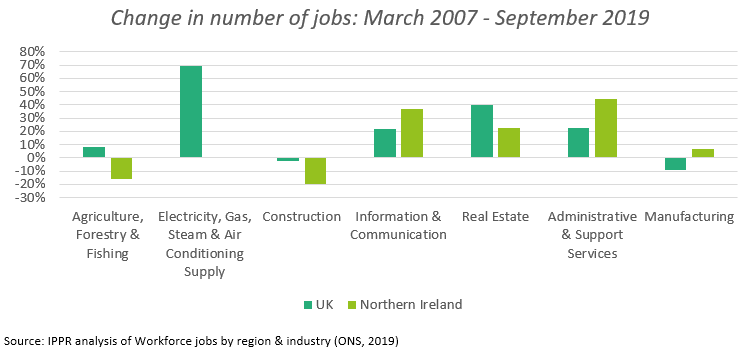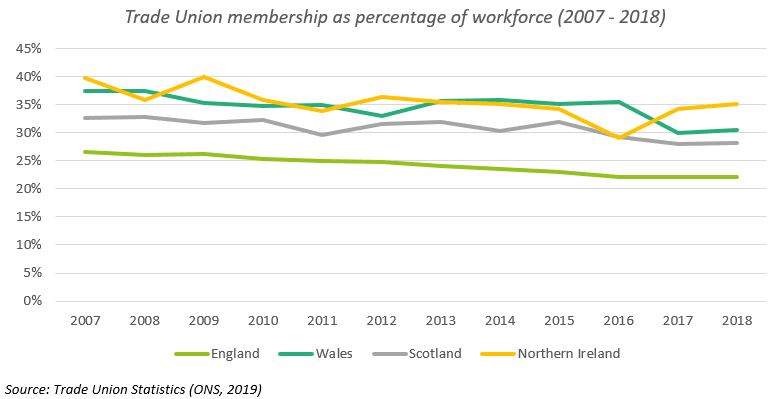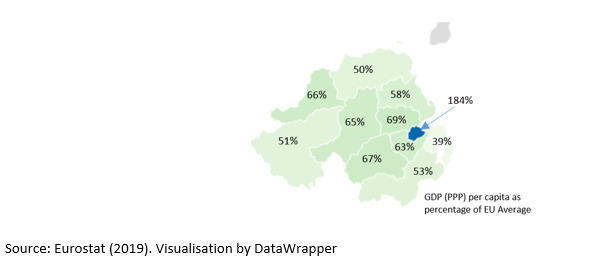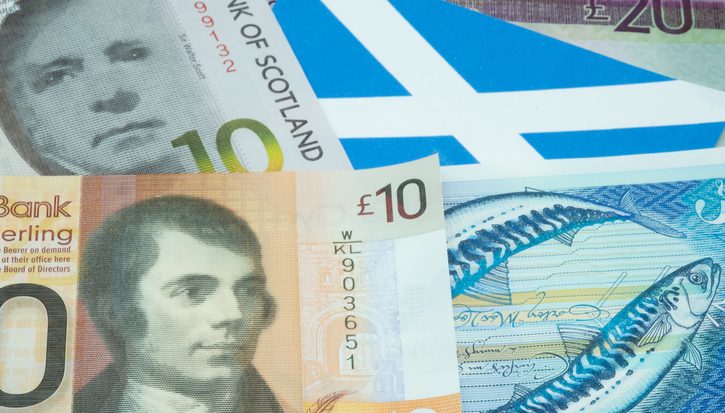REGIONAL ANALYSIS: Northern Ireland
Article
This analysis of the Northern Irish economy was handed out at our event Economic Justice for Northern Ireland. The event was part of a UK-wide series of public meetings held by the IPPR Centre for Economic Justice.
The Northern Ireland economy shrunk more dramatically and took longer to recover than the UK as a whole following the financial crisis

The economy did not grow beyond 2007 levels of production until 2015 in “real terms” (which means after adjusting for inflation), and ever since the recovery has been fragile with the economy shrinking again between 2017 and 2018. Looking across 2007-2018 the Northern Ireland economy grew by just 0.5% a year on average compared to the UK which grew at 1.3% on average over the same period.
This means that the gap has been widening between Northern Ireland the rest of the UK economy.
The number of jobs in the economy has grown, but the character of the job market has changed
Despite this, the number of jobs in Northern Ireland have more than kept pace with the increase in the number of people who live there.
The jobs which have been created and destroyed since 2007 buck a number of UK trends.

For instance, jobs in construction (around 1 in 10 workers in Northern Ireland in 2007) fell by 20% over that period despite a much more modest reduction UK wide. Jobs in manufacturing continued to increase in Northern Ireland despite a UK-wide drop. Some sectors have grown much faster in Northern Ireland than the national picture, such as in information and communication and administration services.
Trade union membership is the highest in the UK
Trade Union membership remains higher in Northern Ireland than the rest of the UK, and has fallen much more slowly than in the rest of the Union. The average worker in Northern Ireland is a third more likely to be a member of a union than the average worker in the UK.
Trade Union membership has been falling in Northern Ireland but less quickly than elsewhere.

There are large gaps between the rich and poor areas of Northern Ireland
Although Belfast is wealthy by European standards, the remainder of Northern Ireland is much poorer than the European average. 5 of the poorest 10 UK sub-regions are in Northern Ireland and these areas are home to 40 per cent of the Northern Ireland population.

Related items

Resilient by design: Building secure clean energy supply chains
The UK must become more resilient to succeed in a more turbulent world.
Policy credibility and the Scottish Budget

Reclaiming Britain: The nation against ethno-nationalism
How can progressives respond to the increasing ethnonationalist narratives of the political right?